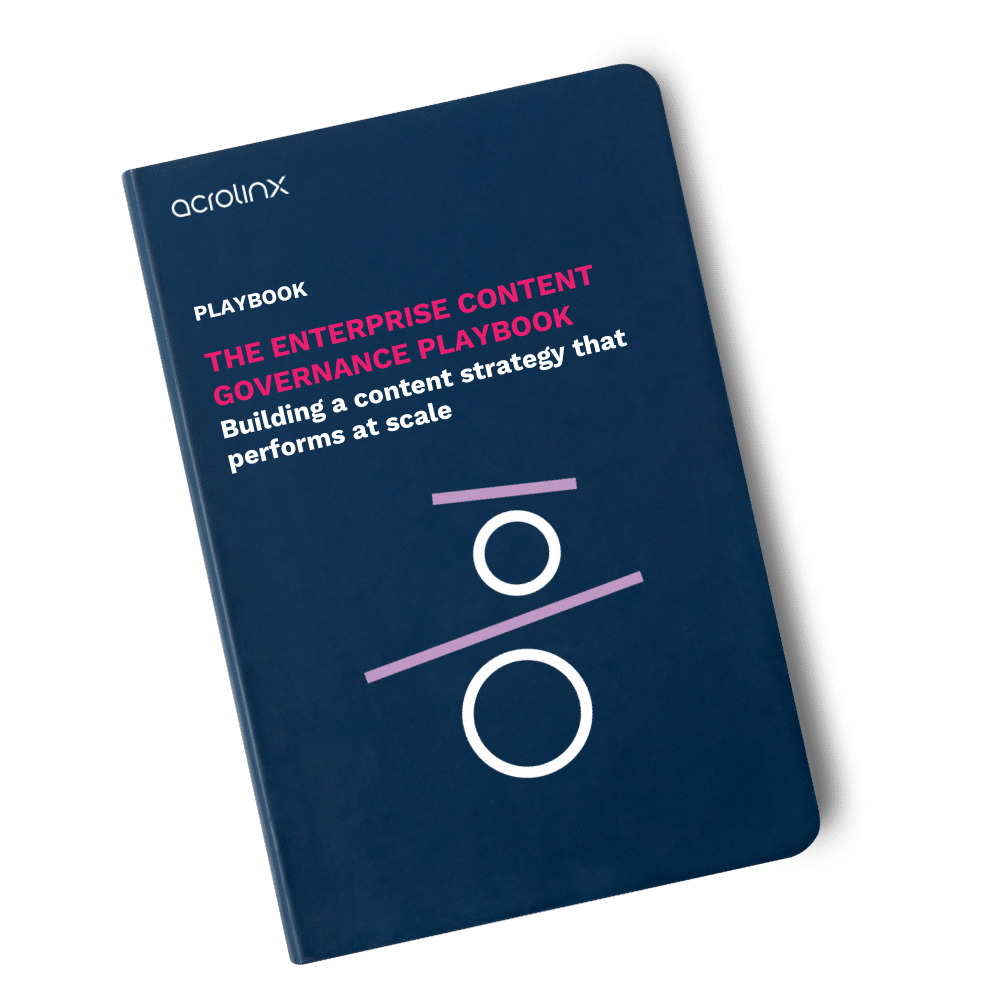Outsourcing Content Writing to Non-Native Speakers: Tips and Strategies for Success

Finding the right balance between cost, quality, and efficiency in content production is a major challenge for large companies. Outsourcing writing helps businesses expand their content efforts. Non-native writers often bring fresh perspectives and unique expertise, which can be a great solution.
However, working with non-native writers has its challenges. Businesses need to address things like cultural differences while maintaining consistent language. This blog offers practical tips for collaborating effectively with non-native writers, especially for complex tasks like technical writing.
AI is now competing directly with outsourced writers because it can be a more cost-effective option. AI tools produce content faster, often with quicker turnaround times than traditional outsourcing. Yet human creativity and cultural understanding remains important. AI creates a lot of good content quickly and cheaply. This makes it a popular choice for many companies. So what’s your strategy? Whether you’re supporting a global team of content creators, using generative AI, or a combination of both — this blog is for you!
Why outsource content writing?
Outsourcing content writing offers several advantages that make it an attractive option for enterprise-level businesses:
Cost efficiency
One of the primary reasons companies outsource content writing is to save costs. Hiring in-house writers, especially in high-cost regions, can be significantly more expensive than contracting freelancers or agencies in countries with lower labor costs. This is particularly beneficial for businesses producing large volumes of content, such as blogs, white papers, and technical documentation.
Faster turnaround times
Outsourcing allows businesses to tap into a global pool of writers, enabling 24/7 content production. With writers working in different time zones, businesses expedite delivery timelines, providing faster turnarounds without overburdening internal teams.
Access to specialized skills
Many non-native writers have expertise in niche areas such as technical documentation, legal writing, or medical content. Outsourcing allows businesses to benefit from these specialized skills without having to invest in extensive in-house training programs.
How to outsource content writing to non-native speakers
Outsourcing to non-native speakers is highly effective if done thoughtfully. Here’s a step-by-step approach:
- Define your needs clearly: Start by identifying the type of content you need — be it marketing copy, technical documentation, or blog posts. Understanding the scope, tone, and style of the content will help you find the right writers or agencies.
- Choose the right talent: Platforms like Upwork, Fiverr, and niche industry networks are excellent places to find skilled non-native writers. Vet candidates by reviewing their portfolios, conducting interviews, and assigning small test projects.
- Provide detailed briefs: A comprehensive brief is crucial when working with non-native speakers. Include details like the target audience, tone of voice, key messages, and formatting requirements.
- Leverage technology for collaboration: Use collaboration tools like Google Docs, Trello, or Asana to streamline communication and keep track of deadlines.
- Use AI tools for quality assurance: Solutions like Acrolinx help maintain linguistic consistency, accuracy, and adherence to both brand and regulatory guidelines.
AI-generated content vs. outsourced writers
With advances in AI, many businesses are now considering AI-generated content as an alternative to hiring outsourced writers. While AI offers distinct advantages, it also comes with limitations. Let’s summarize a few of them:
Advantages of AI-generated content
- Speed and scalability. AI tools like ChatGPT or Jasper produce content in minutes, enabling businesses to scale their content production effortlessly.
- Cost savings. Once an AI system is in place, generating content incurs minimal costs compared to hiring writers.
- Consistency. AI can maintain a consistent tone and style, provided the input parameters are well defined.
Limitations of AI-generated content
- Lack of originality: AI relies on pre-existing data, which can result in generic or repetitive content that lacks a human touch.
- Cultural and contextual gaps: AI struggles to grasp cultural nuances or adapt content to specific regional contexts, which is critical for engaging global audiences.
- Limited domain expertise: While AI can mimic general knowledge, it often lacks the deep expertise that specialized human writers bring to technical or highly niche topics.
- Compliance risks: AI-generated content may inadvertently include inaccuracies or language that fails to meet regulatory standards, particularly in sensitive industries.
Striking the right balance between AI and outsourcing content writing
AI and outsourced writers can collaborate instead of competing. Businesses can leverage AI to create initial drafts, which human writers can then refine to maintain clarity, originality, and the appropriate tone.
AI tools are also useful for repetitive tasks like keyword optimization or grammar checks, freeing up writers to focus on more creative or strategic aspects of content creation. By blending AI’s speed and efficiency with the creativity and expertise of outsourced writers, companies create a hybrid approach that delivers high-quality content while saving time and money.
Challenges of outsourcing content writing to non-native speakers
While outsourcing offers many benefits, it’s not without challenges. Understanding these pitfalls helps you mitigate risks:
Cultural nuances
Non-native writers may inadvertently use phrases or idioms that don’t resonate with your target audience. This is especially critical in marketing copy, where cultural context significantly impacts effectiveness.
Inconsistency in technical language
Technical documentation requires precise and consistent language. Non-native speakers may struggle with industry-specific jargon, leading to inconsistencies that confuse end-users.
Quality control
Maintaining consistent quality is challenging, particularly when working with multiple writers. Variations in writing style, tone, and grammar dilutes your brand’s voice.
Strategies to successfully outsource content writing
Overcoming these challenges requires a strategic approach. Here are some proven strategies to achieve success:
Leverage AI-assisted content governance tools
Content governance plays a pivotal role in maintaining content quality and consistency. Paired with terminology management, governance keeps content consistent and minimizes errors in documentation. Inclusivity audits are another key offering, helping organizations identify and correct biased or non-inclusive language. Through these capabilities, businesses bridge the gap between non-native writers and native-level content expectations, improving overall quality and efficiency.
Create detailed briefs and style guides
Providing detailed instructions is essential when outsourcing content writing. Include the following in your briefs:
- Target audience profile
- Desired tone and style (e.g., formal, conversational)
- Key messages or themes to emphasize
- Examples of preferred content
Style guides should include grammar rules, formatting preferences, and a glossary of approved terms.
Invest in training
Consider offering training sessions to help non-native writers understand your brand’s voice, values, and expectations. Even a one-hour workshop can significantly improve the quality of their output.
Develop a centralized terminology database
For technical documentation outsourcing, a centralized terminology database is invaluable. It helps all writers use consistent terminology, reducing errors and improving user comprehension.
How to manage compliant technical documentation outsourcing
Enterprises prioritize compliance, particularly in industries such as healthcare, finance, and manufacturing. When outsourcing technical documentation, it’s important to follow these best practices:
- Focus on regulatory awareness: Verify that outsourced writers understand relevant regulations, such as GDPR, FDA guidelines, or ISO standards.
- Use compliance-focused tools: Tools like Acrolinx validate compliance by flagging language that doesn’t meet regulatory standards.
- Conduct regular audits: Periodically review outsourced content to confirm it adheres to both regulatory and brand guidelines.
- Collaborate with internal stakeholders: Engage subject matter experts and compliance officers in the content review process to avoid costly errors.
How to manage and monitor outsourced content writers
Effective management is key to a successful outsourcing strategy. Here are some tips for managing and monitoring your outsourced writers:
Set clear KPIs
Start by setting clear key performance indicators (KPIs) that outline what success looks like for your content. These includes quality benchmarks, deadlines, and engagement metrics such as page views or click-through rates. Make sure these KPIs are shared with your writers upfront to establish mutual understanding and accountability.
Maintain regular communication
Regular communication is another essential component of effective management. Schedule weekly or bi-weekly check-ins to discuss progress, address challenges, and provide timely feedback. These meetings help keep projects on track and allow for clarification of any misunderstandings before they become larger issues.
Use collaborative tools
To encourage collaboration, use tools like Slack, Microsoft Teams, Asana, or Basecamp to centralize communication, share resources, and track project updates in real time. When it comes to helping teams follow your writing standards, consider digitalizing your style guide and making it accessible wherever writers work best, to save time spent looking up the right tone, style, or terminology.
Implement a feedback loop
Provide constructive feedback regularly to help writers improve. Acknowledge their achievements and contributions to build trust and foster a positive working relationship. Also, consider offering training or sharing resources to help your writers better align with your brand voice and style, or use a content governance software with editorial assistance.
Monitor performance with guardrails for your content standards
Outsourced writers may vary in expertise and style, while AI systems may lack nuance in context. Acrolinx makes sure that every contributor follows the same content quality framework, to deliver a cohesive customer experience with content.
By embedding governance early in the content creation process, Acrolinx reduces delays and rework. It acts as a quality gate to prevent publication of subpar content, thus saving costs and maintaining brand reputation. Acrolinx also supports content localization and translation, aligning diverse outputs to global standards. It helps different content contributors achieve terminological consistency across different languages, improving efficiency and reducing costly rework.
Lastly, the system automatically scores and validates content. It checks compliance with regulatory needs in financial services and technical precision in manufacturing. This makes every piece of content, regardless of its origin, publication-ready.
Want to learn more about how Acrolinx supports globally distributed teams of any size? Join our bi-weekly demo.
Are you ready to create more content faster?
Schedule a demo to see how content governance and AI guardrails will drastically improve content quality, compliance, and efficiency.

Kiana Minkie
She comes to her content career from a science background and a love of storytelling. Committed to the power of intentional communication to create social change, Kiana has published a plethora of B2B content on the importance of inclusive language in the workplace. Kiana, along with the Acrolinx Marketing Team, won a Silver Stevie Award at the 18th Annual International Business Awards® for Marketing Department of the Year. She also started the Acrolinx Diversity and Inclusion committee, and is a driving force behind employee-driven inclusion efforts.






